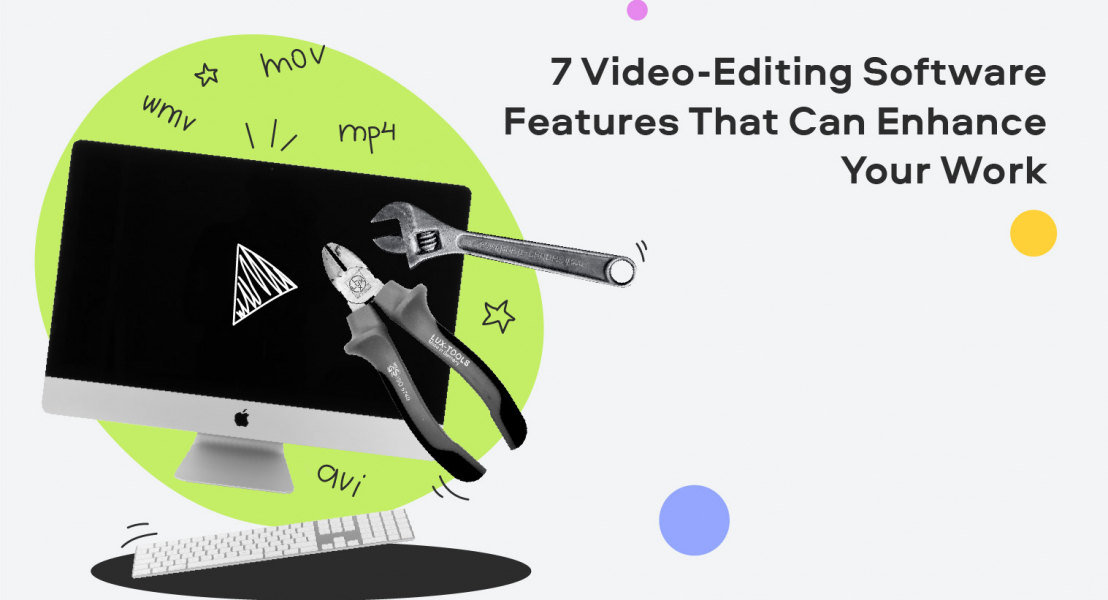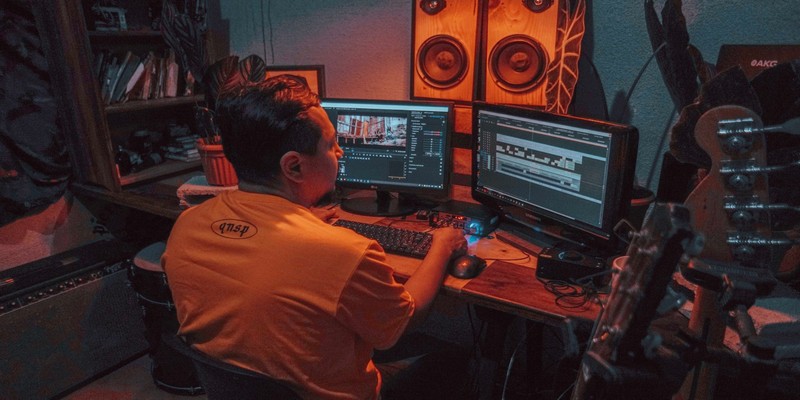We use cookies to improve the services we offer you. By continuing to browse this site, you consent to keep them in accordance with our Privacy Policy.
×We use cookies to improve the services we offer you. By continuing to browse this site, you consent to keep them in accordance with our Privacy Policy.
× 4,454
4,454
 7 min
7 min

Video has become the staple content all throughout digital platforms. Social media channels, websites, and even email and paid search ad content use a lot of videos to engage people and get their attention. With the help of top-level tools to make amazing videos, the world of content has quickly changed. And there are very little advancements more pivotal than the improvement of video-editing software in the growth of video usage.
The importance of video editing – and efficient options at that – cannot be denied. Once upon a time, video was difficult to produce because production and post-production took a lot of time and effort. Now, better video recording tools like DSLRs and smartphones make it easier to record content. Creatives and content creators can then proceed to edit them with relative ease using top-level video-editing software.

While video usage has gone up, not everyone is using it yet. 23% of non-video marketers say they don’t create videos because of a lack of time. So if you’re looking to start creating content, or you’re looking for a more efficient way to save time when creating videos, then you’ll need certain features that can enhance your workflow. Here are the most important ones.
The core experience of video-editing software depends primarily on the user interface of the editor. This is the dashboard where video creators and editors perform edits on a video. The interface of a great video-editing tool should be intuitive, meaning it should be simple enough to use but have all the most heavily used functions ready to perform at the click of a button or a simple action.
Some basic aspects of the user interface in your video-editing software include:
87% of marketers say video has helped them increase traffic. While that’s a great trend to have, it also means more people are vying for audiences’ attention online today. So you’ll need to add certain elements to make the video more appealing to the watchers.
That said, you’ll need some great multimedia sources to add a touch of magic to your videos. These multimedia bits include special effects, graphics, and music among many others. When you use video-editing software online, many of them have their own libraries of stock photos, music, and other multimedia that you can use on your video. Just try to find the one that not a lot of people use yet.
You also want to find video-editing software that will support your video format. File format incompatibility can be an added headache in the whole timeline of video production. The last thing you want is to have a production team shoot hours worth of footage only to end up having a set of files that your video editor doesn’t support.
Some common file types include:
When your video editor doesn’t support file types, you can always convert them, but that will take precious time off your schedule. So it’s better to find a video editor that can support all file types, including your videos, audio files, images, and so on.

When it comes to editing, having a set of fast editing tools can help speed up the process. That helps you and your team develop as many videos as you can in the shortest amount of time possible.
Some editing tools that your video-editing software should have include:
Video files can take up a massive amount of space on your hardware. On average, videos can go anywhere between a few hundred megabytes to several gigabytes worth of files and storage for a few minutes of editing. That said, you want to be able to import and render video footage without requiring super powerful computer hardware. Moreover, you want to have software that doesn’t ruin the quality of your raw content.
So, video optimization plays an important role in video-editing software. A good video-editing tool will have an efficient storage system that allows you to put files into a timeline without having to take up too much RAM or hard storage on your computer. If you’re using a cloud-based video-editing tool, you also want one that provides as much cloud storage as you can.
Studies show that 92% of videos watched on mobile devices are done so with the sound turned off in the United States. So, it’s crucial to have captions, especially when you’re making educational or informative videos. Some video-editing software make it easy to add those captions in, either allowing you to upload an SRT file (the file type for captions) or even automatically create captions with artificial intelligence.
This also comes in handy if you’re planning to create a YouTube channel, where most videos should have captions. While YouTube can automatically add them in for you, they won’t always be accurate, especially if you’re creating videos in a different language. So, it helps to edit the captions into your videos.
Great video-editing tools will also have a way to organize files and projects with a foldering system. This feature, alongside a great project management tool, will ensure that your video-editing process with remain streamlined. That way, you can work on multiple video projects without getting disorganized. When working on multiple videos at once with a marketing team, it also helps to have a project management tool to keep track of timelines and deliverables.
Video content is definitely only going to get more popular. So, it will help to start maximizing its popularity to help build a brand, get more leads, and turn prospects into customers. Video-editing software will help you stay consistent in your marketing strategies and avoid overwhelming your marketing team while pumping out video content.